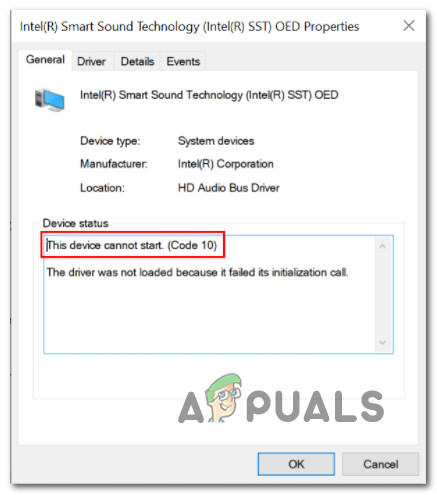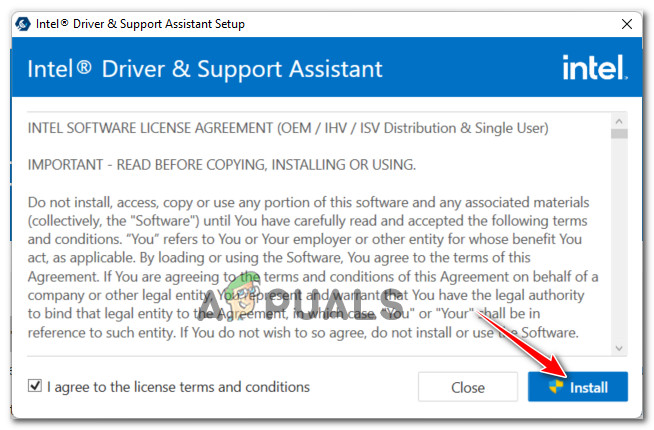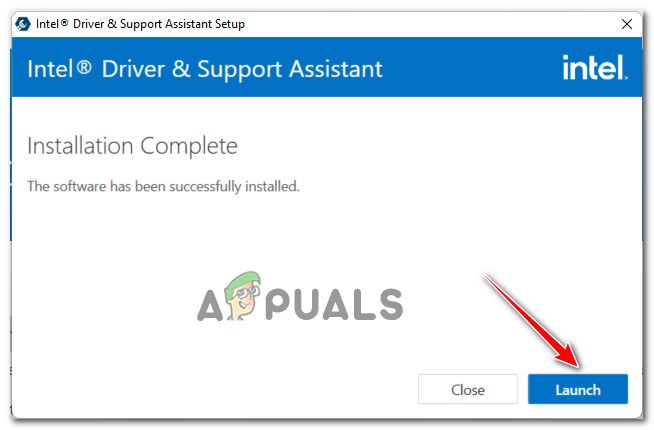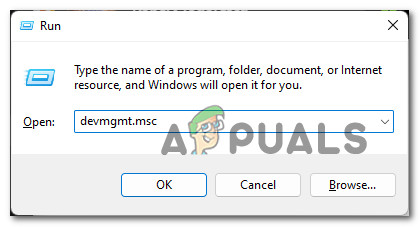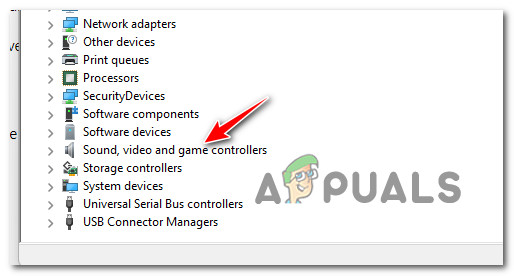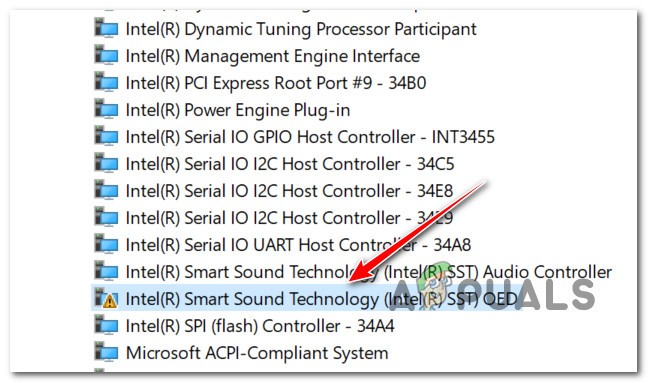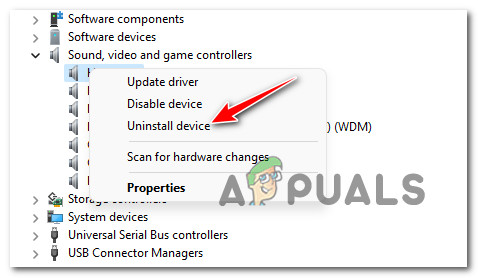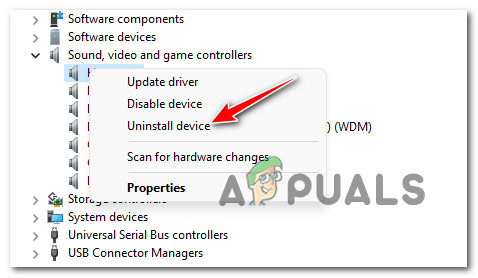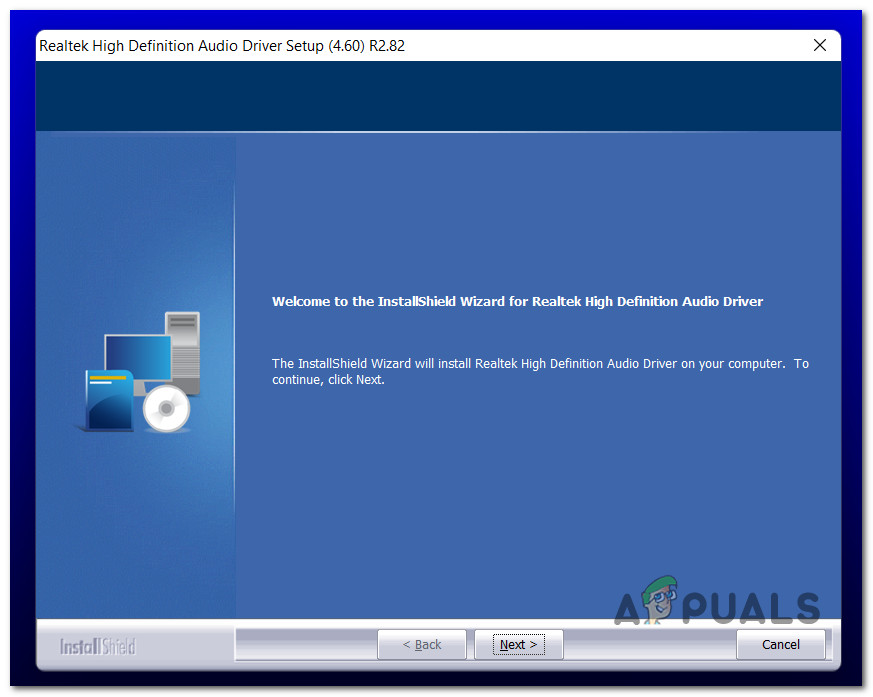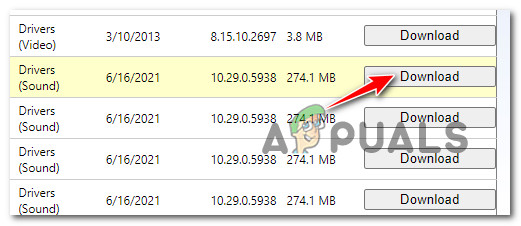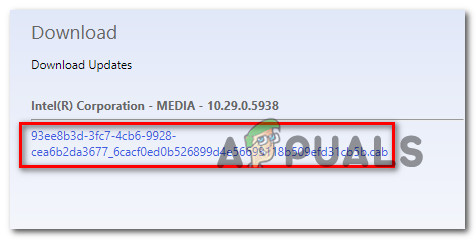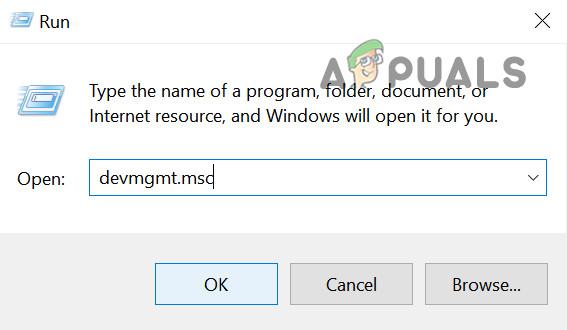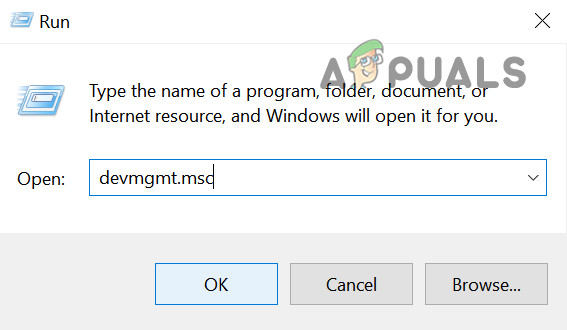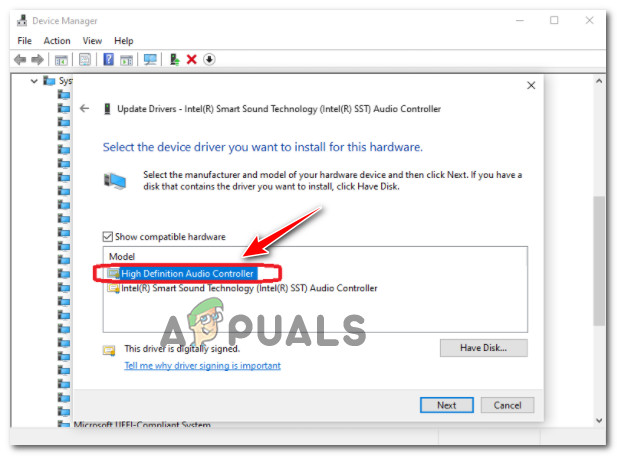In case you’re dealing with the same kind of issue and you see the This device cannot start. (Code 10) or Failed to load external libraries as the listed reasons on why this service fails, there are a few fixes that other affected users have successfully used in order to fix this particular error code. But first, let’s take a look at the most common culprits that might be responsible for these weird issues with the Intel(R) Smart Sound Technology (Intel(r) SST) OED service. Here’s a list of scenarios that you might be currently dealing with: Now that you’re up to date with every culprit that might stop the Intel(R) Smart Sound Technology (Intel(R) SST) OED service in its tracks, here are a couple of methods that other affected users have successfully used to fix this issue entirely.
Update Intel’s driver using DSA
Before you move over to other fixes, you should start simply by ensuring that you’re using the latest available version of the Intel(R) Smart Sound Technology. But our advice is to not rely on Windows (Device Manager or Windows Update) to figure out if you’re on the latest version or not. With the upcoming Windows 11, there’s a lot of segmentation affecting the fleet of Windows drivers currently. The best method of ensuring that you’re using the latest available version of the Intel(R) Smart Sound Technology is to run the proprietary Intel DSA (Driver Support Assistant) utility. Running this tool to help you to figure out if you’re running with the latest Intel drivers installed. If your driver fleet is outdated, this tool will Auto-update your driver to the latest equivalents using the official channels. If you’re looking for instructions on using the Intel Driver & Support Assistant to update your Intel(R) Smart Sound Technology driver, follow the step by step guide below: If the issue is still not resolved, move down to the next potential fix below.
Uninstall the Smart Sound Technology OED driver
This method might seem counter-intuitive, but it’s actually one of the most effective things you can do if you’re currently having issues with the Smart Sound Technology OED service. If you end up using Device Manager to uninstall the driver that is currently governing this service, you will essentially force your operating system to migrate to a generic equivalent. And since the issue is only reported to occur in situations where the Intel dedicated Sound Technology driver is used, you can expect the issue to be resolved entirely once your PC begins using the generic driver equivalent. Note: Don’t worry about losing audio or recording capabilities permanently. You will only experience a brief interruption while your Windows computer migrates from the dedicated driver to the generic equivalent. If you haven’t tried this fix yet, follow the instructions below to learn how to get rid of Inte’s equivalent of the Smart Sound Technology OED and migrate over to a generic equivalent using Device Manager: Note: The instructions below will work on both Windows 10 and Windows 11. If you’re no longer seeing the error related to the Intel(R) Smart Sound Technology (Intel(r) SST) OED but you still don’t have any sound or recording capabilities, move down to the next potential fix below.
Install the correct Realtek HD Audio driver
Depending on your PC configuration, it might not be enough to make the switch to a generic driver. If you’re using a Lenovo or Dell laptop, you might need to download the custom audio driver that the manufacturer recommends before you can get the issue fixed. There are a lot of affected users who reported that the issue has been fixed after they moved away from the Intel driver equivalent to a solution provided by Realtek. If you’re encountering this with a Dell or Lenovo laptop and your manufacturer recommends a Realtek driver, follow the instructions below to install the correct Realtek HD Audio driver version and avoid the apparition of the Intel(R) Smart Sound Technology (Intel(r) SST) OED error: Note: The instructions below will be slightly different depending on your motherboard manufacturer. Below you’ll find an example of installing the correct Realtek HD driver equivalent for a Dell laptop. If your manufacturer is different, refer to the Note section for instructions on finding out the correct version in your case. In case you’re still dealing with the same Intel(R) Smart Sound Technology (Intel(r) SST) OED error, move down to the next potential fix below.
Install the Intel Media driver via Microsoft Update Catalog
If you tried removing or replacing the Intel(R) Smart Sound Technology (Intel(r) SST) OED and you’re still dealing with the same kind of issue, you should start considering the fact that you’re encountering this error because you’re missing an optional driver that this driver requires. According to some affected users, certain PC configurations will need an additional driver dependency that gets installed along with the driver Intel(R) Corporation – MEDIA – 10.29.0.5938. If this scenario is applicable, you should be able to fix the problem by using the Microsoft Update Catalog infrastructure to download and install the missing driver dependency. In case you’re unsure of how to do this, follow the instructions below: If the problem is still not fixed yet, move over to the final fix below.
Replace the driver with the HD Audio Controller
If none of the methods below have been effective in your case, one last thing you can try is to instruct your Windows installation to disregard the current driver and use the generic High Definition Audio Controller driver instead. This should happen automatically when you uninstall the driver via Device Manager, but if you have DSA installed or a different utility, the issue will return as the bad driver gets reinstalled. Follow the instructions below to use Device Manager to specifically instruct your PC to disregard the Smart Sound Technology driver from intel and use the High Definition Audio Controller instead.: Note: The instructions below will work regardless if you’re using Windows 10 or Windows 11.
Fix: Your Profile could not be opened correctlyFix: Your Computer Appears to be Correctly Configured, but the Device or…Fix: Automatic Repair Your PC did not Start CorrectlyFix: Icons not showing Correctly in Windows 10 Search
